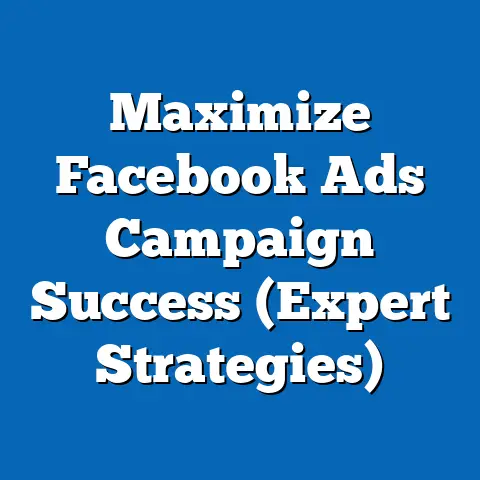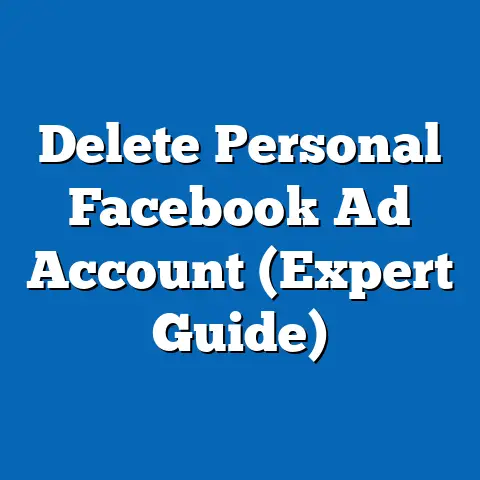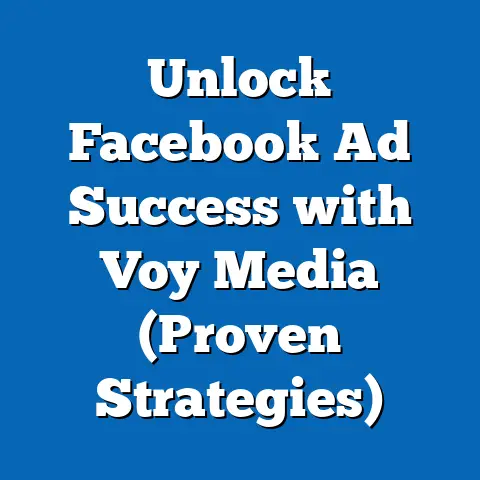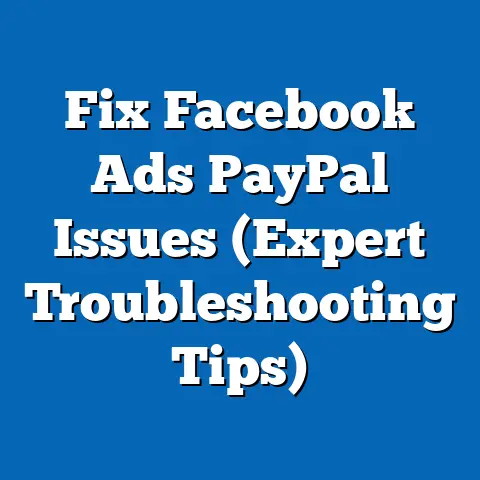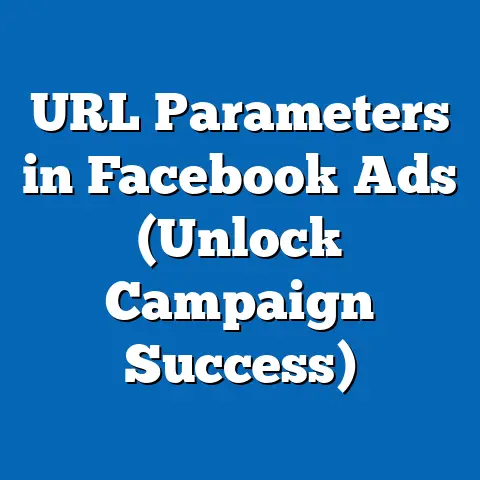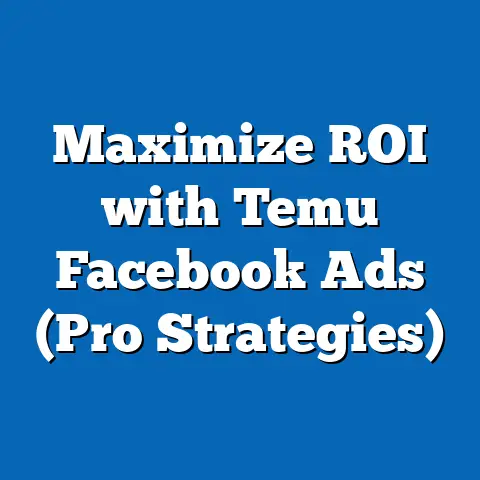Boost Facebook Ads’ Impact (Proven Strategies Revealed)
I’ve seen it time and again: businesses, armed with the best intentions and a decent budget, launch Facebook ad campaigns only to be met with underwhelming results. It’s a frustrating paradox, isn’t it? Facebook boasts billions of users, incredibly granular targeting options, and a sophisticated advertising platform. Yet, many find themselves throwing money into the digital void, wondering where they went wrong.
Why is this happening? It’s not that Facebook advertising doesn’t work. It absolutely does. The problem lies in a lack of understanding and a failure to implement effective strategies. Think of it like this: you can have the most powerful car in the world, but without knowing how to drive it properly, you’re not going anywhere fast.
Facebook advertising is a vital component of any modern digital marketing strategy. It offers unparalleled reach, precise targeting, and the ability to connect with your audience on a personal level. But to truly harness its power, you need a strategic roadmap.
Key Strategies for Facebook Ads Impact:
- Mastering the Facebook Ads Ecosystem: Understanding the platform’s capabilities and tools.
- Identifying Your Ideal Audience: Leveraging Facebook’s targeting options for precision.
- Crafting Compelling Ad Copy and Visuals: Creating ads that grab attention and drive action.
- Optimizing Campaigns for Maximum Reach: Selecting the right objectives and placements.
- Leveraging Facebook Insights and Analytics: Making data-driven decisions for continuous improvement.
- Staying Ahead of Trends: Adapting to algorithm changes and embracing new features.
Understanding the Facebook Ads Ecosystem
Facebook advertising has come a long way since its humble beginnings. In the early days, it was a relatively simple affair. Now, it’s a sophisticated ecosystem with a vast array of ad formats, targeting options, and analytics tools. Understanding this ecosystem is the first crucial step towards creating successful campaigns.
I remember when Facebook ads were just basic text and image combinations. Now, we have everything from immersive video ads to interactive experiences. The evolution has been rapid, and it’s essential to stay on top of the changes.
The Evolution of Facebook Advertising
Facebook’s advertising platform has evolved dramatically over the years, adapting to changes in user behavior and technological advancements. Initially, ads were simple text-based messages with limited targeting capabilities. Today, advertisers can leverage a wide range of ad formats, from image and video ads to carousel ads, collection ads, and interactive experiences.
Relevance in Today’s Market:
In today’s digital landscape, Facebook advertising remains a powerful tool for businesses of all sizes. With billions of active users, Facebook offers unparalleled reach and the ability to target specific demographics, interests, and behaviors. According to Statista, Facebook’s advertising revenue in 2023 reached over $134 billion, highlighting its continued dominance in the digital advertising market. Moreover, Facebook’s advanced targeting options, combined with sophisticated analytics, enable advertisers to optimize their campaigns for maximum ROI.
Ad Formats: Choosing the Right Weapon
Facebook offers a diverse range of ad formats, each with its own strengths and weaknesses. Choosing the right format depends on your campaign goals, target audience, and creative resources. Here’s a breakdown of some of the most popular options:
- Image Ads: Simple, effective, and easy to create. Ideal for driving website traffic and promoting specific products.
- Video Ads: Highly engaging and capable of conveying complex messages. Perfect for brand awareness and storytelling.
- Carousel Ads: Allow you to showcase multiple products or features in a single ad. Great for e-commerce businesses.
- Collection Ads: Combine images and videos in a visually appealing format. Designed to drive product discovery and sales.
- Instant Experience Ads: Full-screen, immersive ads that load instantly on mobile devices. Ideal for creating engaging brand experiences.
- Lead Ads: Collect leads directly within Facebook without sending users to an external landing page. Useful for lead generation campaigns.
I’ve found that video ads consistently outperform image ads in terms of engagement, especially when targeting younger audiences. However, a well-crafted image ad can still be incredibly effective, particularly for simple product promotions.
Navigating the Facebook Ads Manager Interface
The Facebook Ads Manager is your central command center for creating, managing, and analyzing your ad campaigns. While it can seem daunting at first, understanding its key features and tools is essential for success.
Here are some of the most important sections of the Ads Manager:
- Campaigns: Where you create and manage your overall advertising objectives.
- Ad Sets: Where you define your target audience, budget, and ad placements.
- Ads: Where you create and design your individual ads.
- Reporting: Where you track your ad performance and analyze key metrics.
- Audiences: Where you create and manage your saved audiences, custom audiences, and lookalike audiences.
I often spend a significant amount of time in the “Audiences” section, experimenting with different targeting options and creating custom audiences based on website data and customer lists. This is where the real magic happens.
Key Metrics: Measuring What Matters
To truly understand the impact of your Facebook ads, you need to track and analyze key metrics. These metrics provide valuable insights into your ad performance and help you identify areas for improvement.
Here are some of the most important metrics to monitor:
- Reach: The number of unique people who saw your ad.
- Impressions: The number of times your ad was displayed.
- Click-Through Rate (CTR): The percentage of people who clicked on your ad after seeing it.
- Cost Per Click (CPC): The amount you pay each time someone clicks on your ad.
- Cost Per Mille (CPM): The amount you pay for 1,000 impressions of your ad.
- Conversion Rate: The percentage of people who completed a desired action (e.g., purchase, sign-up) after clicking on your ad.
- Return on Ad Spend (ROAS): The amount of revenue you generate for every dollar you spend on advertising.
I always tell my clients to focus on the metrics that directly align with their business goals. If you’re running a brand awareness campaign, reach and impressions are important. If you’re trying to drive sales, focus on conversion rate and ROAS.
Takeaway: Understanding the Facebook Ads ecosystem, including ad formats, the Ads Manager interface, and key metrics, is crucial for creating effective campaigns.
Next Steps: Explore the different ad formats available and experiment with the Facebook Ads Manager interface. Familiarize yourself with the key metrics and start tracking your ad performance.
Identifying Your Target Audience
You can have the most beautifully designed ad in the world, but if it’s shown to the wrong people, it’s going to fall flat. Identifying your target audience is arguably the most important step in creating successful Facebook ad campaigns.
I’ve seen countless campaigns fail simply because the advertiser didn’t take the time to properly define their target audience. It’s like trying to sell snow to Eskimos – it’s just not going to work.
The Importance of Audience Segmentation
Audience segmentation involves dividing your target market into smaller, more homogenous groups based on shared characteristics. This allows you to tailor your ads to specific segments, increasing their relevance and effectiveness.
Here are some common ways to segment your audience:
- Demographics: Age, gender, location, education, income.
- Interests: Hobbies, passions, activities.
- Behaviors: Purchase history, online activity, device usage.
- Life Events: New job, marriage, graduation.
By segmenting your audience, you can create ads that speak directly to their needs and desires. This leads to higher engagement, increased conversions, and a better return on your ad spend.
Facebook’s Audience Targeting Options
Facebook offers a wide range of audience targeting options, allowing you to reach your ideal customers with laser precision.
Here are some of the most powerful targeting options:
- Core Audiences: Target people based on demographics, interests, and behaviors.
- Custom Audiences: Target people who have interacted with your business, such as website visitors, email subscribers, or app users.
- Lookalike Audiences: Target people who share similar characteristics with your existing customers.
- Saved Audiences: Save your targeting criteria for future use.
I’ve had great success using Lookalike Audiences. By uploading a list of my best customers, Facebook can identify other users who share similar traits and are likely to be interested in my products or services.
The Power of the Facebook Pixel
The Facebook Pixel is a small piece of code that you can install on your website to track visitor behavior. This data can be used to create Custom Audiences and retarget website visitors with relevant ads.
For example, if someone visits a specific product page on your website but doesn’t make a purchase, you can retarget them with an ad featuring that product. This is a highly effective way to drive conversions and increase sales.
I always recommend installing the Facebook Pixel on your website as soon as possible. The sooner you start collecting data, the sooner you can start creating powerful retargeting campaigns.
A/B Testing Your Audience
A/B testing involves creating two or more versions of your ad with different targeting criteria and comparing their performance. This allows you to identify the most effective audience for your ads.
For example, you could create two ad sets targeting different age groups or interests. By tracking the performance of each ad set, you can determine which audience is more responsive to your ads and focus your budget accordingly.
I’m a big believer in A/B testing. It’s the best way to validate your assumptions and optimize your campaigns for maximum performance.
Takeaway: Identifying your target audience is crucial for creating successful Facebook ad campaigns. Leverage Facebook’s audience targeting options and the Facebook Pixel to reach your ideal customers with laser precision.
Next Steps: Define your ideal customer and create detailed customer personas. Experiment with Facebook’s audience targeting options and install the Facebook Pixel on your website. Start A/B testing your audience to optimize your campaigns for maximum performance.
Crafting Compelling Ad Copy and Visuals
Once you’ve identified your target audience, the next step is to create ad copy and visuals that grab their attention and compel them to take action. In today’s crowded digital landscape, your ads need to stand out from the noise.
I’ve learned that people are bombarded with hundreds of ads every day. To break through the clutter, your ads need to be both visually appealing and emotionally resonant.
The Art of Persuasive Ad Copy
Effective ad copy is clear, concise, and persuasive. It should highlight the benefits of your product or service and tell your audience why they should care.
Here are some key techniques for writing compelling ad copy:
- Focus on Benefits, Not Features: Instead of listing the features of your product, focus on the benefits it provides to the customer.
- Use Strong Action Verbs: Use verbs that inspire action, such as “Shop Now,” “Learn More,” or “Get Started.”
- Create a Sense of Urgency: Use language that creates a sense of urgency, such as “Limited Time Offer” or “While Supplies Last.”
- Address Pain Points: Identify your audience’s pain points and explain how your product or service can solve them.
- Tell a Story: Use storytelling to connect with your audience on an emotional level.
I always try to write ad copy that speaks directly to my target audience’s needs and desires. I ask myself, “What problem am I solving for them?” and “Why should they choose my product or service over the competition?”
The Power of Headlines and CTAs
Your headline and call-to-action (CTA) are the most important elements of your ad copy. They’re the first things people see, and they determine whether or not they’ll click on your ad.
Here are some tips for writing effective headlines and CTAs:
Visuals That Resonate
High-quality visuals are essential for creating effective Facebook ads. Your images and videos should be visually appealing, relevant to your target audience, and consistent with your brand.
Here are some tips for using visuals effectively:
- Use High-Resolution Images: Avoid blurry or pixelated images.
- Showcase Your Product: If you’re selling a product, show it in action.
- Use Faces: Images with faces tend to perform better than images without.
- Keep it Simple: Avoid cluttered or distracting visuals.
- Use Video: Video ads are highly engaging and can convey complex messages.
I always try to use visuals that tell a story and evoke emotion. A picture is worth a thousand words, and a great visual can make a huge difference in your ad’s performance.
Examples of Successful Ad Copy and Visuals
To illustrate these concepts, let’s look at some examples of successful ad copy and visuals from various industries:
-
Example 1: E-commerce (Clothing)
- Headline: “New Arrivals: Spring Collection is Here!”
- Body: “Freshen up your wardrobe with our latest spring styles. Shop dresses, tops, and more!”
- Visual: High-quality image of a model wearing the new spring collection.
- CTA: “Shop Now”
-
Example 2: SaaS (Software as a Service)
-
Headline: “Struggling with Project Management? Try Our Free Trial!”
- Body: “Our project management software helps you stay organized, collaborate effectively, and meet deadlines. Start your free trial today!”
- Visual: Screenshot of the software interface.
- CTA: “Start Free Trial”
-
Example 3: Local Business (Restaurant)
-
Headline: “Delicious Pizza, Delivered to Your Door!”
- Body: “Craving pizza tonight? Order online and get 20% off your first order! Use code PIZZA20 at checkout.”
- Visual: Mouthwatering image of a pizza.
- CTA: “Order Now”
Example 1: E-commerce (Clothing)
- Headline: “New Arrivals: Spring Collection is Here!”
- Body: “Freshen up your wardrobe with our latest spring styles. Shop dresses, tops, and more!”
- Visual: High-quality image of a model wearing the new spring collection.
- CTA: “Shop Now”
-
Example 2: SaaS (Software as a Service)
-
Headline: “Struggling with Project Management? Try Our Free Trial!”
- Body: “Our project management software helps you stay organized, collaborate effectively, and meet deadlines. Start your free trial today!”
- Visual: Screenshot of the software interface.
- CTA: “Start Free Trial”
-
Example 3: Local Business (Restaurant)
-
Headline: “Delicious Pizza, Delivered to Your Door!”
- Body: “Craving pizza tonight? Order online and get 20% off your first order! Use code PIZZA20 at checkout.”
- Visual: Mouthwatering image of a pizza.
- CTA: “Order Now”
Example 2: SaaS (Software as a Service)
Headline: “Struggling with Project Management? Try Our Free Trial!”
Example 3: Local Business (Restaurant)
Headline: “Delicious Pizza, Delivered to Your Door!”
Takeaway: Crafting compelling ad copy and visuals is essential for capturing attention and driving action. Focus on benefits, use strong CTAs, and create visuals that resonate with your target audience.
Next Steps: Review your existing ad copy and visuals. Are they clear, concise, and persuasive? Do they highlight the benefits of your product or service? Are your visuals high-quality and relevant to your target audience? Experiment with different headlines, CTAs, and visuals to see what performs best.
Optimizing Ad Campaigns for Maximum Reach and Engagement
Creating great ads is only half the battle. To truly maximize your impact, you need to optimize your ad campaigns for maximum reach and engagement. This involves selecting the right campaign objectives, choosing the best ad placements, and optimizing your budget and bidding strategies.
I’ve seen many well-designed ads fail simply because they were shown to the wrong people or placed in the wrong locations. Optimization is the key to ensuring that your ads reach the right audience at the right time.
Selecting the Right Campaign Objectives
Facebook offers a variety of campaign objectives, each designed to achieve a specific goal. Choosing the right objective is crucial for ensuring that your ads are optimized for the desired outcome.
Here are some of the most common campaign objectives:
- Awareness: Increase brand awareness and reach a broad audience.
- Traffic: Drive traffic to your website or app.
- Engagement: Increase engagement with your Facebook page or posts.
- Leads: Collect leads for your business.
- App Installs: Drive app installs.
- Video Views: Increase views of your video ads.
- Conversions: Drive conversions on your website or app.
- Sales: Drive sales of your products or services.
I always advise my clients to start with a clear understanding of their business goals. What are you trying to achieve with your Facebook ads? Once you know your goals, you can select the appropriate campaign objective.
Choosing the Best Ad Placements
Facebook offers a variety of ad placements, including:
- Facebook Feed: The main news feed on Facebook.
- Instagram Feed: The main news feed on Instagram.
- Facebook Stories: Short-form video and image content that disappears after 24 hours.
- Instagram Stories: Short-form video and image content that disappears after 24 hours.
- Facebook Marketplace: A platform for buying and selling goods and services.
- Facebook Audience Network: A network of third-party websites and apps that display Facebook ads.
The best ad placement depends on your campaign objectives, target audience, and ad format. For example, video ads tend to perform well on Facebook and Instagram Stories, while image ads are often more effective on the Facebook Feed.
I recommend testing different ad placements to see which ones perform best for your campaigns. You can use Facebook’s Automatic Placements feature to let the platform optimize your ad placements automatically.
Budget Allocation and Bidding Strategies
Your budget and bidding strategies play a crucial role in determining the reach and effectiveness of your ad campaigns.
Here are some key concepts to understand:
- Daily Budget: The average amount you’re willing to spend on your ad campaign each day.
- Lifetime Budget: The total amount you’re willing to spend on your ad campaign over its entire duration.
- Bidding Strategies: The way you bid for ad placements.
Facebook offers several bidding strategies, including:
- Lowest Cost: Facebook automatically bids to get you the most results for your budget.
- Cost Per Result Goal: You set a target cost per result, and Facebook bids to achieve that goal.
- Manual Bidding: You set your own bids for ad placements.
I generally recommend starting with the Lowest Cost bidding strategy and then experimenting with other options as you gain more data.
Enhancing Engagement
Engagement is a key indicator of ad performance. High engagement rates indicate that your ads are resonating with your target audience.
Here are some proven techniques for enhancing engagement:
- Use Interactive Content: Use interactive content such as polls, quizzes, and contests to engage your audience.
- Ask Questions: Ask questions in your ad copy to encourage interaction.
- Run Limited-Time Offers: Create a sense of urgency by running limited-time offers.
- Use User-Generated Content: Feature user-generated content in your ads.
- Respond to Comments and Messages: Engage with your audience by responding to comments and messages promptly.
I’ve found that running contests and giveaways is a great way to boost engagement and generate leads.
Takeaway: Optimizing your ad campaigns for maximum reach and engagement involves selecting the right campaign objectives, choosing the best ad placements, optimizing your budget and bidding strategies, and enhancing engagement through interactive content and prompt responses.
Next Steps: Review your existing ad campaigns and ensure that you’ve selected the right campaign objectives. Experiment with different ad placements and bidding strategies. Implement techniques for enhancing engagement, such as running contests and responding to comments.
Leveraging Facebook Insights and Analytics
Data is the lifeblood of successful Facebook advertising. Without data, you’re just guessing. Facebook Insights and Analytics provide a wealth of information about your ad performance and audience behavior. By leveraging these tools, you can make data-driven decisions that optimize your campaigns for maximum ROI.
I’ve seen countless campaigns transformed simply by paying attention to the data. It’s like having a GPS for your advertising – it tells you where you are, where you’re going, and how to get there most efficiently.
Facebook Insights: Your Data Dashboard
Facebook Insights provides a comprehensive overview of your ad performance, including:
- Reach and Impressions: The number of people who saw your ads and the number of times your ads were displayed.
- Engagement: The number of likes, comments, shares, and clicks your ads received.
- Conversions: The number of conversions your ads generated.
- Cost Per Result: The average cost you paid for each result (e.g., click, conversion).
- Audience Demographics: Information about the age, gender, location, and interests of your audience.
By analyzing this data, you can identify trends, patterns, and areas for improvement.
Interpreting Key Metrics
Understanding how to interpret key metrics is crucial for making data-driven decisions.
Here are some key metrics to focus on:
- Click-Through Rate (CTR): A high CTR indicates that your ads are relevant and engaging to your target audience.
- Cost Per Click (CPC): A low CPC indicates that you’re bidding efficiently for ad placements.
- Conversion Rate: A high conversion rate indicates that your ads are effectively driving conversions.
- Return on Ad Spend (ROAS): A high ROAS indicates that your ads are generating a positive return on investment.
I always compare my metrics to industry benchmarks to see how my campaigns are performing relative to the competition.
Case Studies: Data-Driven Success
To illustrate the power of data-driven decision-making, let’s look at some case studies of businesses that have successfully used analytics to optimize their Facebook ads:
-
Case Study 1: E-commerce Business
- An e-commerce business was struggling to generate sales with their Facebook ads.
- By analyzing their data, they discovered that their ads were performing poorly on mobile devices.
- They optimized their ads for mobile devices and saw a 50% increase in sales.
-
Case Study 2: Lead Generation Company
-
A lead generation company was generating a lot of leads with their Facebook ads, but the leads were low quality.
- By analyzing their data, they discovered that their ads were targeting the wrong audience.
- They refined their audience targeting and saw a significant improvement in the quality of their leads.
-
Case Study 3: Local Restaurant
-
A local restaurant was trying to drive traffic to their restaurant with their Facebook ads.
- By analyzing their data, they discovered that their ads were performing well during lunch hours but poorly during dinner hours.
- They adjusted their ad schedule to focus on lunch hours and saw a significant increase in traffic.
Case Study 1: E-commerce Business
- An e-commerce business was struggling to generate sales with their Facebook ads.
- By analyzing their data, they discovered that their ads were performing poorly on mobile devices.
- They optimized their ads for mobile devices and saw a 50% increase in sales.
-
Case Study 2: Lead Generation Company
-
A lead generation company was generating a lot of leads with their Facebook ads, but the leads were low quality.
- By analyzing their data, they discovered that their ads were targeting the wrong audience.
- They refined their audience targeting and saw a significant improvement in the quality of their leads.
-
Case Study 3: Local Restaurant
-
A local restaurant was trying to drive traffic to their restaurant with their Facebook ads.
- By analyzing their data, they discovered that their ads were performing well during lunch hours but poorly during dinner hours.
- They adjusted their ad schedule to focus on lunch hours and saw a significant increase in traffic.
Case Study 2: Lead Generation Company
A lead generation company was generating a lot of leads with their Facebook ads, but the leads were low quality.
Case Study 3: Local Restaurant
A local restaurant was trying to drive traffic to their restaurant with their Facebook ads.
Continuous Monitoring and Iteration
Data analysis is not a one-time event. It’s an ongoing process. You need to continuously monitor your ad performance and iterate on your strategies based on the data.
I always recommend setting up a regular reporting schedule to track your key metrics. This will help you identify trends, patterns, and areas for improvement.
Takeaway: Leveraging Facebook Insights and Analytics is crucial for making data-driven decisions that optimize your campaigns for maximum ROI. Continuously monitor your ad performance and iterate on your strategies based on the data.
Next Steps: Familiarize yourself with Facebook Insights and Analytics. Start tracking your key metrics and analyzing your data. Identify trends, patterns, and areas for improvement. Make data-driven decisions to optimize your campaigns.
Staying Ahead of Trends and Best Practices
The world of Facebook advertising is constantly evolving. New features are introduced, algorithms change, and best practices are updated. To stay ahead of the curve, you need to stay informed about the latest trends and adapt your strategies accordingly.
I’ve learned that what worked yesterday may not work today. The key is to be flexible, adaptable, and always willing to experiment.
The Rise of Video Content
Video content has exploded in popularity in recent years, and Facebook is no exception. Video ads are highly engaging and can convey complex messages in a short amount of time.
I always recommend incorporating video into your Facebook advertising strategy. Whether it’s a short product demo, a customer testimonial, or a behind-the-scenes look at your business, video can help you connect with your audience on a deeper level.
Influencer Partnerships
Influencer marketing has become a powerful tool for reaching new audiences and building brand awareness. By partnering with influencers who have a strong following in your target market, you can tap into their audience and gain instant credibility.
I’ve had great success working with influencers to promote my products and services. It’s a great way to reach a highly targeted audience and generate buzz around your brand.
Personalized Ads
Personalization is the key to creating ads that resonate with your target audience. By using data to tailor your ads to individual users, you can increase their relevance and effectiveness.
I always recommend using Facebook’s Dynamic Ads feature to personalize your ads based on user behavior. This allows you to show users ads for products they’ve viewed on your website or items they’ve added to their cart.
Algorithm Changes and Privacy Regulations
Facebook’s algorithm is constantly changing, and these changes can have a significant impact on your ad performance. It’s important to stay informed about these changes and adapt your strategies accordingly.
Privacy regulations, such as GDPR and CCPA, also have a significant impact on Facebook advertising. You need to ensure that your ads are compliant with these regulations and that you’re respecting user privacy.
Best Practices for Keeping Up
Here are some best practices for keeping up with industry changes:
- Follow Industry Blogs and Publications: Stay informed about the latest trends and best practices by following industry blogs and publications.
- Attend Industry Conferences and Webinars: Network with other marketers and learn from industry experts at conferences and webinars.
- Experiment with New Features: Be willing to experiment with new features and ad formats.
- Test and Iterate: Continuously test and iterate on your strategies based on the data.
Takeaway: Staying ahead of trends and best practices is crucial for maintaining a competitive edge in Facebook advertising. Embrace video content, influencer partnerships, personalized ads, and stay informed about algorithm changes and privacy regulations.
Next Steps: Research the latest trends in Facebook advertising. Experiment with new features and ad formats. Follow industry blogs and publications. Attend industry conferences and webinars.
The key takeaway is that successful Facebook advertising requires a holistic approach. It’s not enough to just create a great ad and hope for the best. You need to understand your audience, create compelling creative, optimize your campaigns, and continuously monitor your performance.
I encourage you to implement these strategies in your own Facebook advertising campaigns. Don’t be afraid to experiment, test, and iterate. The world of Facebook advertising is constantly evolving, and the key to success is to be flexible, adaptable, and always willing to learn.
Remember, the power of Facebook advertising lies in its ability to connect you with your ideal customers on a personal level. By understanding their needs, desires, and pain points, you can create ads that resonate with them and drive meaningful results for your business.
So go forth, armed with this knowledge, and create Facebook ad campaigns that not only reach your target audience but also inspire them to take action. The potential is there, waiting to be unlocked. Good luck, and happy advertising!

